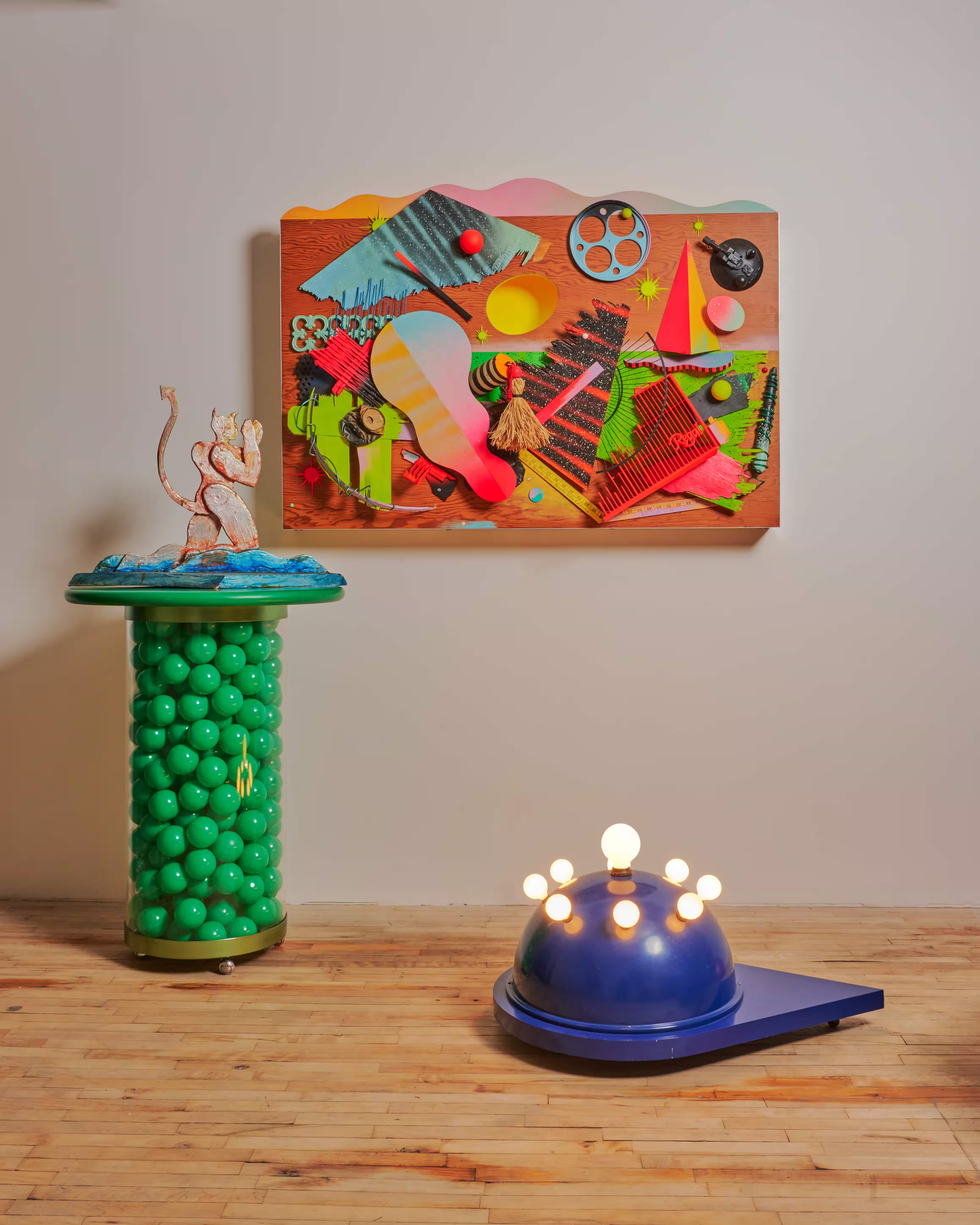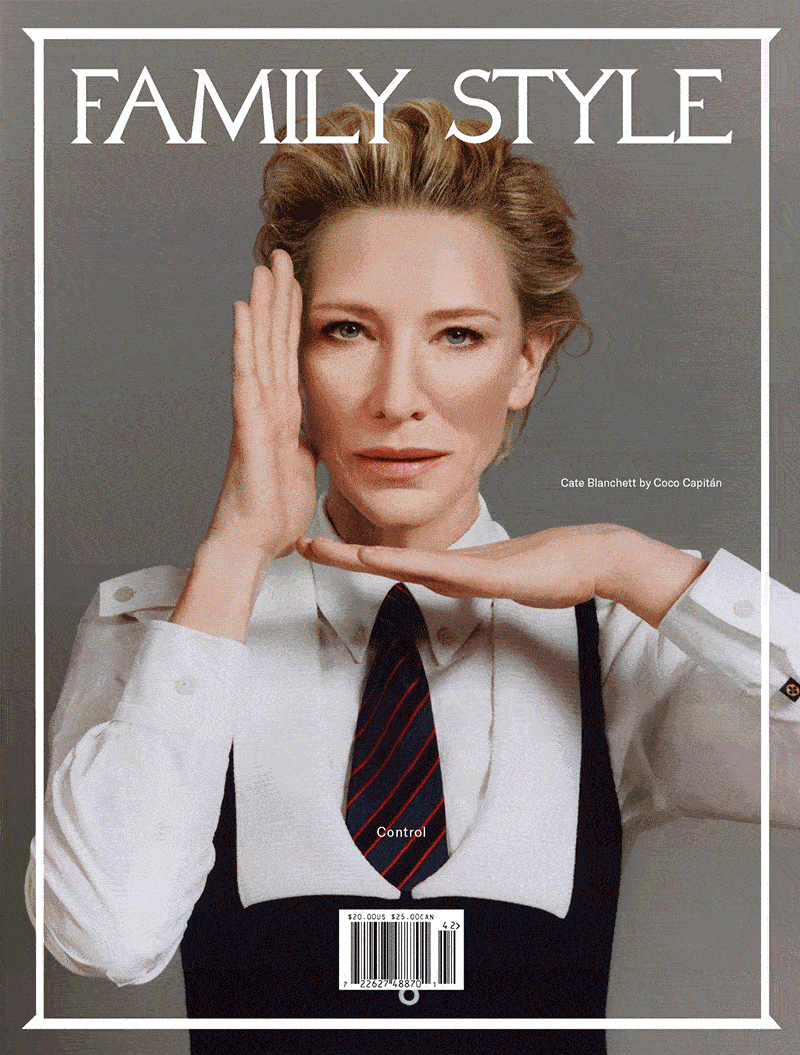
Installation view of “Why shouldn’t I have fun all day?” Photography by Matthew Gordon. Image courtesy of the artist's estate and Superhouse.
“Why shouldn’t I have fun all day?” This question prompted the late artist and designer Dan Friedman to depart from New York City’s corporate design world and pursue the alluring downtown art scene of the 1980s. It is also the title of his new solo show, his first in a gallery since 1994. The exhibition at Superhouse, which commemorates the 30-year anniversary of Friedman’s death, recalls the artist’s domestic space that he transformed into a hybrid of art and caricature.
Friedman’s practice began conventionally and escalated to what was considered incredibly radical. After graduating from Carnegie Mellon University in 1967, he studied graphic design at the Ulm School of Design in Germany and then moved to Basel to study under the Swiss modernist graphic designer Armin Hoffmann at Schule für Gestaltung. In 1969, Friedman returned to New York to work at design firms Pentagram and Anspach Grossman Portugal.

Type image caDan Friedman, Basic Screen, 1981. Image courtesy of the artist and Superhouse. Photography by Matthew Gordon.ption here (optional)
The progressive influences of New York City’s art scene began to seep into Friedman’s psyche as he encountered the works of Keith Haring, Kenny Scharf, and Jean-Michel Basquiat. Soon, he was questioning the conventions of “good design,” disenchanted by his day job. Looking for a way out, he covered every surface of his one-bedroom East Village apartment with vibrant, geometric art and sculptures. He transformed the home into a visually stimulating artistic laboratory of experimental, modernist design.
Today at Superhouse, “Why Shouldn’t I Have Fun All Day?” reanimates this unique, domestic environment by framing Friedman’s works from 1981-1990 against the same neon backdrops of his historic apartment. An angular, tri-fold floor-screen, painted in red, yellow, and turquoise with jagged cut-outs reveals the soft pink wall behind it. The sculpture, titled Basic Screen, 1981, is situated adjacent to two more of his earliest works in the collection, Wicky Wicky Table, 1981 and Please chair, 1982. Elsewhere, A Fallen Sky in a Regal Landscape, 1985, features a textural collage of found objects, like crushed aluminum cans and raffia tassels, on plywood that conveys consumerism and waste. The assemblage is hung behind Ball Table, 1985, a playful, green metal pedestal that would go unquestioned in a playground. Together, it’s an extreme caricature of homemade modernity.
.avif)
Dan Friedman, A Fallen Sky in a Regal Landscape, 1985. Image courtesy of the artist and Superhouse. Photography by Matthew Gordon.
The sculptures on view illustrate the artist’s departure from functional design, but the practical skills he learned from his early days carry over, too. Friedman’s decidedly non-functional sculptures question how an object changes when its intended purpose becomes obsolete. Subversion is at the core of Friedman’s artistic ethos. “Be radical,” is the final rule from his seminal manifesto Radical Modernism, published following his death at the age of 50 from AIDS-related illness. His influence on modern design remains provocative, resonating with those who share his aversions to traditional artistic practices. Even the artist’s activism with the Art Against AIDS campaign, in which he designed and distributed advocacy posters, challenged a polarized political environment. Thirty years later, his work continues to question conventions, encourage eclecticism, and most of all, inspire fun.
“Why Shouldn’t I Have Fun All Day?” is on view until March 22, 2025, at Superhouse at 120 Walker Street, 6R, New York, NY 10013.






.avif)



.avif)

